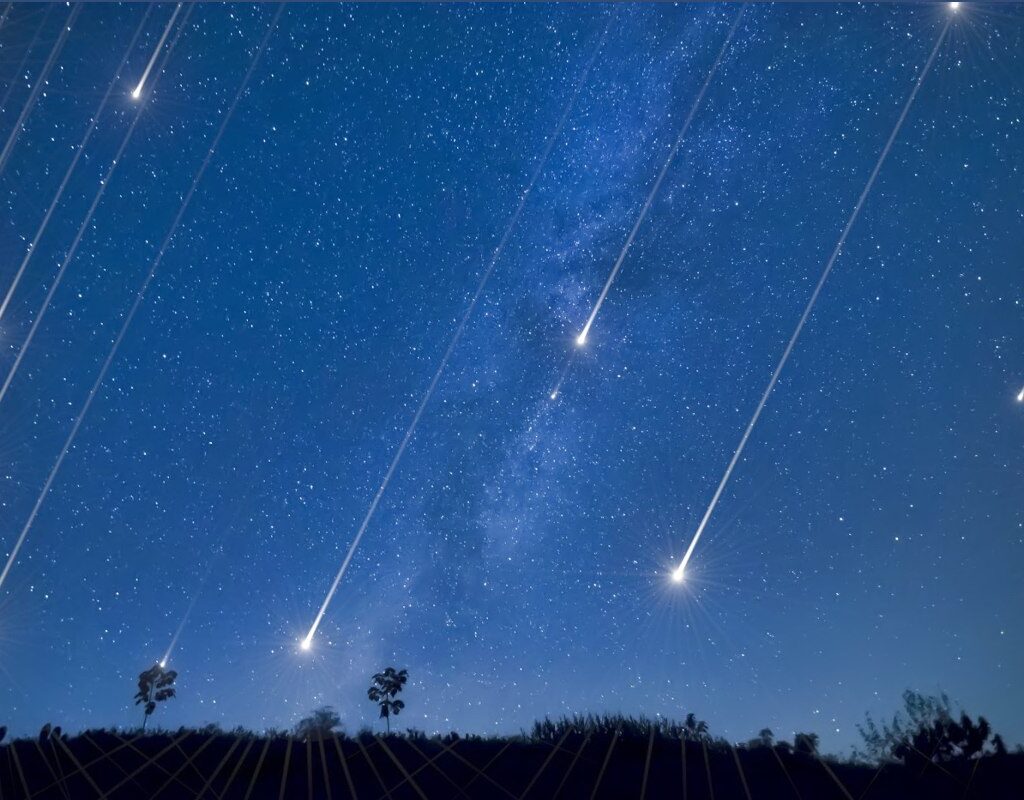Once again, the skies play host to the Perseids, also renowned as the Tears of St. Lawrence, promising an unparalleled astral show. As noted by the National Astronomical Observatory, August 12 marks the peak visibility for this captivating meteor shower.
The Perseids or The Tears of St. Lawrence: An Unrivaled Astral Beauty
This cosmic event commences around July 17 and concludes by August 24. Yet, its pinnacle lies between the nights of August 12 and 13, specifically from 3:00 PM to 6:00 PM (Peninsular time) on the 12th.
The Lore and Mythology Behind the Perseids
More than an astral occurrence, the Perseids carry with them a rich tapestry of history and mythology. They derive their name from the constellation of Perseus, from whence they seem to emanate.
Greek mythological tales recount Perseus as the valiant hero who beheaded the Gorgon Medusa. The constellation’s position in the heavens aligns with the radiant point of the meteor shower, thus bestowing upon it its distinctive title.
The Perseids’ Connection to St. Lawrence
Beyond the stars, the bond between the Perseids and St. Lawrence intertwines with tradition and history. The Tears of St. Lawrence harken back to the martyr of the same name, celebrated on August 10. Legend ties these tears to his time of martyrdom.
St. Lawrence, a Roman deacon of the third century, met his end as a martyr. As the tale goes, while being burned at the stake for his beliefs, he challenged the emperor, stating, “Turn me over; I’m done on this side.”
Fittingly, the Perseids manifest close to his martyrdom date, fostering the age-old association of the meteor shower with his tears.
Why the Skies Gift Us the Perseids
This cosmic event emerges as Earth intersects the trajectory of the comet Swift-Tuttle. This comet trails a mix of gases, dust, and debris.
As Earth encounters these fragments, they clash with our atmosphere at staggering speeds of up to 50 kilometers per second, resulting in the eagerly anticipated meteor shower. The Swift-Tuttle comet, boasting a 133-year cycle, last made its approach to the Sun in 1992.
Tips for Relishing the Meteor Shower
While the Perseids grace many global skies, certain spots offer superior visual delights. National parks, secluded beaches, and mountain ranges remain the go-to locales for astronomy enthusiasts.
Being removed from city light pollution, these areas ensure a more vivid and detailed observation. Observers should opt for dark locales, free from urban luminescence and obstructions like tall buildings or trees. An open vista is ideal for lying down and gazing skyward.
The beauty of the Perseids lies in their visibility to the naked eye, without the aid of telescopes or binoculars.
More than Just a Meteor Shower: A Bridge between Humanity and the Cosmos
From a scientific perspective, meteor showers provide a singular chance to probe comets and their atmospheric interactions. The Perseids have piqued many astronomers’ interest due to their consistency and visibility.
Culturally, the Perseids have permeated poetry, music, and art over the ages. Once perceived as omens and divine signals, they are now revered for their sheer celestial splendor.
In essence, the Perseids are not just a meteor shower; they symbolize the bridge connecting humanity with the vast cosmos. Annually, as we peer into the August skies, we are reminded of the universe’s boundless expanse and our humble yet poignant place within it. It offers a moment of introspection, awe, and a sense of continuity with history and the encompassing culture.
Starlit Perseid Performance: Night’s Radiant Revelry
The universe stages its annual show with the Perseid meteor cascade. Observe as these space travelers light up the horizon with their fiery trails. Read more>>





